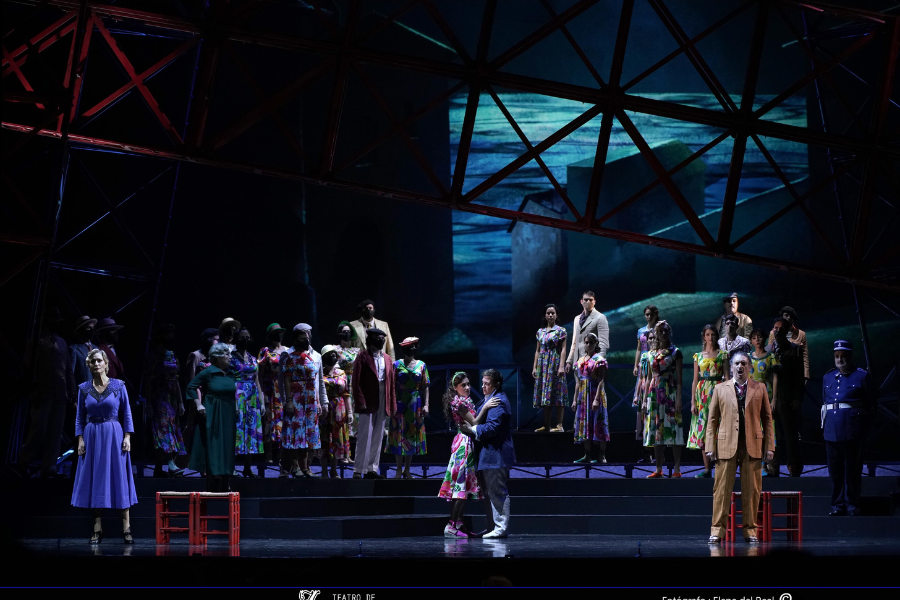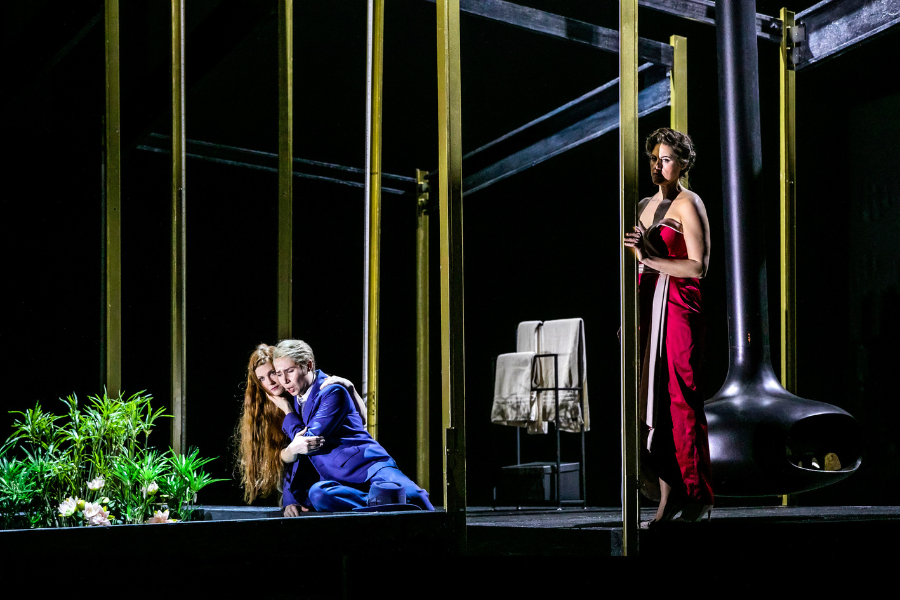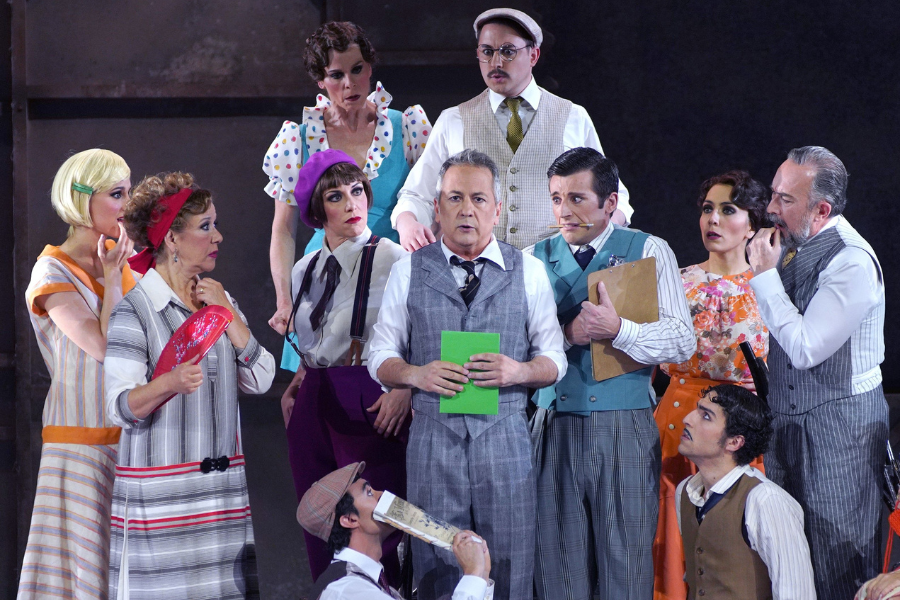The Teatro de la Maestranza joins Ópera Latinoamérica

Inaugurated on May 2, 1991, the Teatro de la Maestranza is located in the middle of a historic setting in the city of Seville, close to the Torre del Oro, the Church of Santa Caridad and the Real Maestranza bullring. The work of the architects Aurelio del Pozo and Luis Marín, the Andalusian coliseum offers a program “aimed at all audiences and made up of own productions, co-productions with theaters and festivals, thematic cycles, special recitals or performances on tour”. In this interview, Javier Menéndez, general director of the theater, delves into the reasons for his association with Ópera Latinoamérica, explains the management model and addresses the way in which the program approaches the different cultural audiences in the city.
Seville has been an inspiration for artists, poets, musicians and composers. Particularly, it is a city that lives in the imaginary of the opera, with more than 150 lyrical works set in it. From Scarlatti (Creonte) and Handel (Rodrigo), through Mozart (The Marriage of Figaro), Bizet (Carmen), Beethoven (Fidelio) and Rossini (The Barber of Seville), to Prokofiev (Engagement in a Monastery) and Milhaud (La mère coupable), Seville has enchanted with its rich historical tradition and vibrant Andalusian culture, a melting pot of social and artistic influences. Ironically, until 1991, the capital of the autonomous community of Andalusia did not have a space or adequate facilities to program operas in all their splendor.
At the end of the 1980s, a project of the Provincial Council of Seville chose the architects Aurelio del Pozo and Luis Marín and entrusted them with the mission of designing an infrastructure according to the needs of a lyrical theatre, but which would also accommodate both shows musicals of great symphonic formations as plays.
After construction began in 1987, the Teatro de la Maestranza opened its doors in 1991 with an inauguration ceremony led by the then Queen Sofía and an inaugural concert given by the Seville Symphony Orchestra, conducted by the Yugoslavian Vjekoslav Sutej. , and a program made up of works by Ruperto Chapí, Sergei Rachmaninov and Nicolai Rimsky-Korsakov.

For the design of the hall, the architects of the Teatro de la Maestranza, Aurelio del Pozo and Luis Marín, were advised by Professor Lothar Cremer, who was co-author of the acoustics at the Berlin Philharmonie.
Since then, the Teatro de la Maestranza has positioned itself as an unavoidable theater in the lyrical and cultural panorama of Spain, with 30 seasons and more than 2,000 shows programmed in its recent history. The infrastructure is endowed with a technical level that is expressed with all its magnitude in the main hall of the theater, which is covered by a wooden structure with convex shapes and truncated planes and offers acoustics that have been highlighted by show business figures, like the dancer Ángel Corella.
These technical characteristics place the theater in a privileged position “within Andalusia, but also within the entire national territory, in an ambitious position of internationalization and significant influence within the production and exhibition of lyrical shows”, says Javier Menéndez, general director of the Teatro de la Maestranza.
Today, the Teatro de la Maestranza joins Ópera Latinoamérica and becomes the seventh Spanish theater to join the organization. And it is a decision that, moreover, is accompanied by a historical burden. “Seville has historically been the point of origin of the first contacts between Europe and America. There were already several Spanish theaters linked to OLA. We understood the inclusion of La Maestranza de Sevilla in this group to be inalienable”, says Menéndez.
In this interview, the general director of the theater addresses different aspects of the theater’s management, as well as the approach to the different audiences and, in addition, he anticipates some outstanding operas of the next season at the Teatro de la Maestranza.
Why did the Teatro de la Maestranza decide to join Ópera Latinoamérica?
There are several reasons, some very obvious. For example, to extend, strengthen, and tighten ties with all Latin American theaters, with which we have historical cultural ties. The possibility of being more connected to the entire lyrical sector that represents such an important part of the world geography, with historical spaces and others in development, under very ambitious bases in terms of the desire to play a leading role in the sociocultural development of communities where they settle, provides us with many possibilities for exchange and learning.
On the other hand, Seville has historically been the point of origin of the first contacts between Europe and America. There were already several Spanish theaters linked to OLA (Auditorio de Tenerife, Palau de Les Arts in Valencia, Teatro Real or Gran Teatre del Liceu). We understood the inclusion of the Maestranza de Sevilla in this group to be inalienable.
What place does this space have in the cultural life of Seville and the general artistic panorama of Spain?
The Teatro de la Maestranza is the most technically and acoustically equipped scenic infrastructure with adequate dimensions to host large operatic performances. This places us, within Andalusia, but also within the entire national territory, in an ambitious position of internationalization and important influence within the production and exhibition of lyrical shows.
In addition, Seville is the city that has most inspired great composers, with more than 150 works, including some of the most important and popular, such as The Barber of Seville, Don Giovanni, The Marriage of Figaro, Carmen, Fidelio, La forza del destino, as well as others that are much less well known, such as Maria Padilla by G. Donizetti, Conchita by R. Zandonai, The Gypsy for Love by M. García or Chérubin by J. Massenet.

The zarzuela Los gavilanes, by Jacinto Guerrero, is part of the next opera season at the Teatro de la Maestranza. Photo: Elena del Real.
On its website, the theater states that “a large number of public administrations, private companies, foundations and citizens collaborate to strengthen the development and achievement of the cultural, educational and social objectives that have been the raison d’être of the Teatro de la Maestranza since which was conceived.” How is that goal achieved? What relationship strategies do they have with these different actors?
That is the management and operation model that prevails in Spain. A model of balanced public and private participation that ensures the viability of the theater’s artistic project, varied in terms of the various artistic disciplines, although in our DNA the leading role is the lyrical repertoire, dance and symphonic music. This diversity is reflected in the actors who participate and support our management.
Public administrations in all areas (local, provincial, regional and state) form our board of directors. The participation of institutions, sponsors and the general public is achieved through a two-way commitment, in which the theater is obliged to ensure a stimulating, balanced and attractive artistic discourse, as well as efficient and realistic management.
How do you approach the different audiences in the community? Do you have specific projects for training, education, dissemination, innovation, etc.?
Mainly through a varied and diverse artistic offer, combining a policy of prices, subscriptions and packages that make the theater’s proposals accessible to all types of audiences. Through policies to approach new audiences, mainly aimed at the population sector under 30 years of age, especially students: Loans for 10 Euros, access to general rehearsals, 80% discount the day before and the day of the show, especially theater capacity. We are also working a lot on online dissemination with projects specifically aimed at young audiences.

Alcina, by Handel, will be scheduled for the first time at the Teatro de la Maestranza during the next opera season.
How is the lyrical program of the Teatro de la Maestranza projected for this 2023? What productions or lyrical activities can you highlight?
We are very excited about the programming for the 23/24 season that we will start in September. Notable is Tristan und Isolde, which opens the season, with the musical direction of Henrik Nánási; Alcina’s presence for the first time at the Maestranza, with the Seville Baroque Orchestra in the pit, conducted by Andre Marcon and stage direction by Lotte de Beer; the world premiere of La bella Susona, by the Sevillian composer Alberto Carretero or the closure, with the new production directed by Christiane Jatahy, from Nabucco co-produced with Geneva, Luxembourg and Antwerp.
We will also have for the first time the zarzuela Los gavilanes by Jacinto Guerrero and a contemporary chamber opera in collaboration with the Lope de Vega Theater, Lazarillo by David del Puerto. A recital by Javier Camarena, the XIX city of Seville new voices contest and the opera Norma complete the lyrical offer of the season. I invite you to take a look at our website to have a complete idea of all our offer for the 23/24 season.






